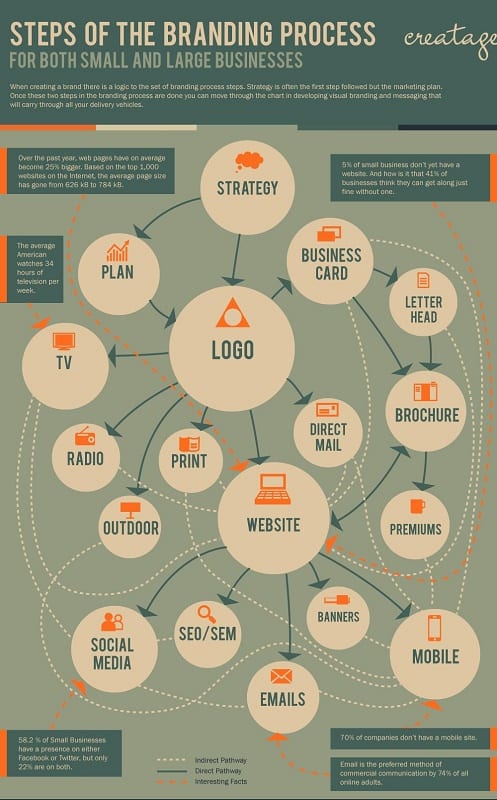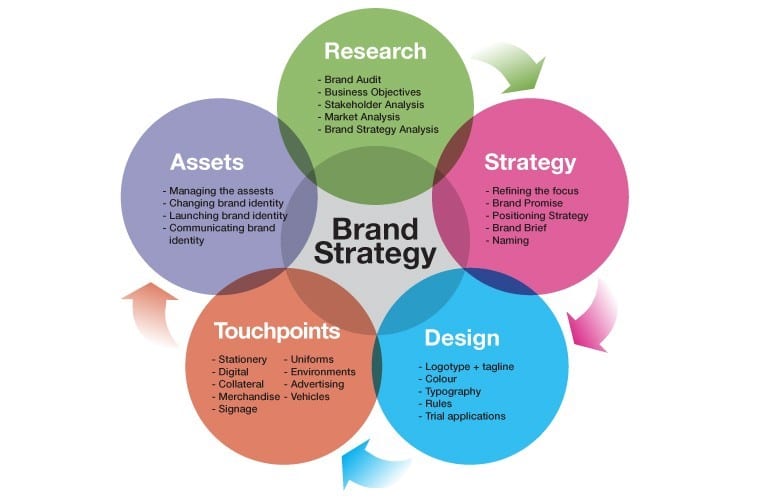Internet Branding Strategy
Art and science of establishing a unique identity through intangible elements that come together to establish an exclusive image for a product.

In order to understand branding, it is important that you have a better understanding of the difference between market share and mind share. Most marketers confuse the both terms. Market share is the segment of a market that is controlled by your brand. In other words, market share represents how much of the market is influenced by your brand for long term sales. Mind share, on the other hand, is consumer’s awareness regarding your brand and, most importantly, your product.
The following figure illustrates what consitutes a good brand strategy.

5 major elements play a key role in identifying a company’s brand strategy and they include:
- Brand strategy analysis: Brand strategy analysis includes a thorough strategic research that identifies the strong aspects of the market and consumer that would impact the brand’s identity. This includes consumer research and market research to identify and analyze the factors that could have a positive effect on a brand’s image.
- Creating brand identity: After a thorough market and consumer research, marketers outline the elements that would define the brand’s identity. These elements (discussed below) are responsible to shape up the image for the brand in order to promote and make sales in the near future.
- Brand positioning: Brand identity identifies the brand form other brands in the market, whereas brand positioning allows marketers to place the brand’s image in the target audience’s mind.
- Brand design: Brand design contributes towards brand’s identity and, ultimately, positioning. Design includes various elements, including color schemes, typography, and illustrations that give the brand its unique image.
- Brand advertising: The first 4 elements can never see the light of the day if it weren’t for a sound advertising campaign. Brand advertising promotes the company’s brand to the target audience through the unique image created by using the above 4 elements. Advertising programs are also used to remind customers about the brand and refresh their memories regarding the features of the product.




